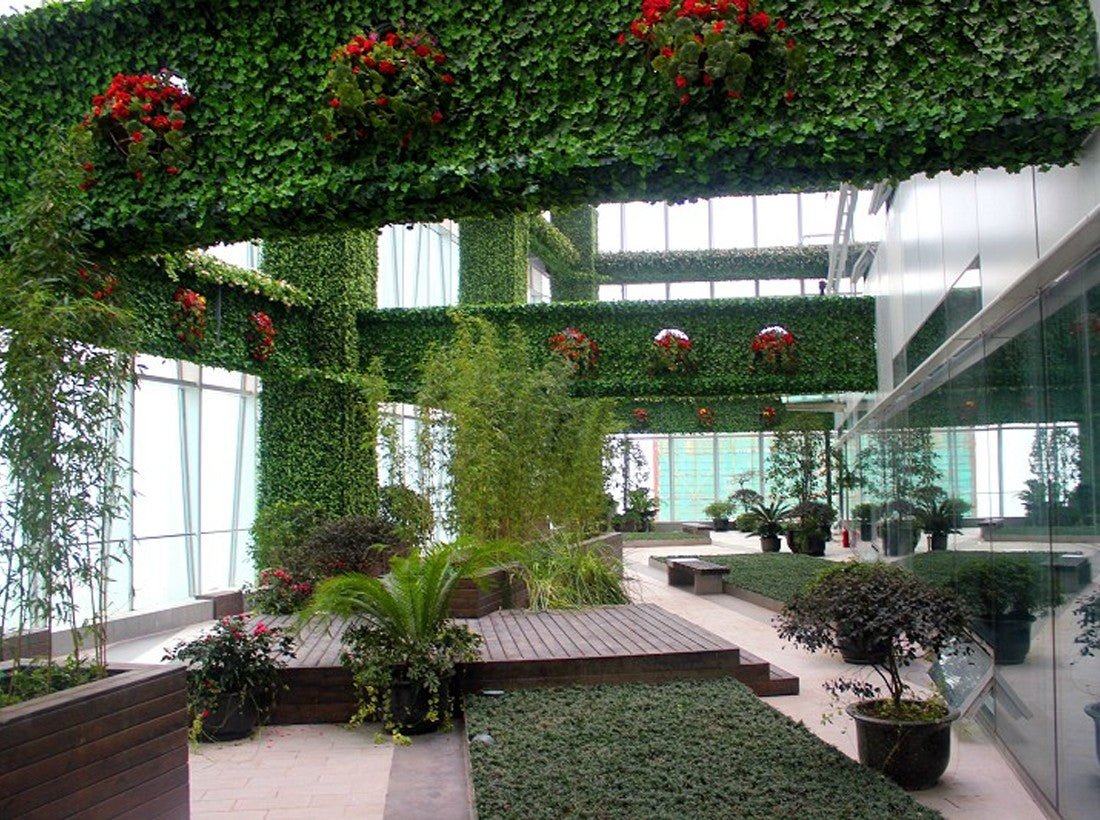Centuries ago, silk flowers and wax petals took center stage. And to this day, they haven’t left.
Today, we’ll dig through the annals of history, tracing the origins of artificial plants as they wind their way through time, from the ancient Roman and Egyptian eras to the opulence of Marie Antoinette’s France. Along the way, we’ll witness the transformative technology that ushered in the plastic era and continues to sculpt our modern landscape.
So, when were fake plants invented?
Let’s find out!
The History of Artificial Plants
Unfortunately, we don’t know who invented fake plants. But what we do know is that the first artificial flowers weren’t made of plastic, but silk.
To unravel the timeline of artificial plants, we’ll have to venture into the history of artificial flowers. This is where it all began.
The Roman and Egyptian Era
Like most decorative elements, it’s impossible to pinpoint the exact time artificial flowers emerged, as the original versions bore little resemblance to what we have today. But scientists speculate that artificial plants can be traced back to the early Roman and Egyptian civilizations.
Historical evidence reveals that ancient Egyptians crafted floral wreaths from thin horn plates stained in different colors. These wreaths adorned homes and celebrations and served as some of the earliest examples of artificial plant decoration.
Around that time, the ancient Romans developed and perfected the art of replicating flowers in wax. Their craftsmanship was so ingenious that it remains unmatched to this very day. In fact, flowers held such cultural significance in Roman society that Crassus, a notable Roman general and statesman, adorned victors in games with crowns made of gold and silver artificial leaves.
Ancient Chinese Legends

Some historians believe that they can trace the roots of contemporary fake foliage to ancient China 1,500 years ago. During this era, the Chinese began cultivating silk, reportedly inspired by the legend of Leizu, the wife of the Yellow Emperor.
As the tale goes, Leizu was sipping tea in her garden when a silk moth’s cocoon fell into her cup and unraveled. Upon inspecting the cocoon, she came to the idea of using it to create soft fabric. And so, silk production was established.
Another legend tells of the Chinese emperor Tang Xuanzong’s beloved concubine, Yang, who sought to conceal a scar on her left sideburn. Palace girls used to pick natural flowers to put in Yang’s hair, but when winter came around, the flowers would wither. Then, a palace girl made the first artificial flower from ribs and silk for Yang to wear during the winter, giving birth to the “headdress flower” and the “imitation flower” craft.
Despite these innovations, the cost of silk rendered it affordable only for the elite, who employed it for artistic expression, not mass production.
Centuries later, skilled craftsmen began creating intricate silk flower arrangements for China’s upper crust. These delicate blooms found their way into noblewomen’s portraits and adorned the hair of women at the Imperial Palace.
The Royal Emblem
When silk flowers arrived in France during the 1300s, the French hounded the new product and began experimenting with the craft. Thanks to their impeccable-quality silk, French artisans created their own renditions of lifelike silk flowers.
The French were so committed to the craft that they developed a reputation for mastering the art of crafting silk flowers. During Louis XVI’s reign in the 1700s, French silk flowers were celebrated for their craftsmanship, with one anecdote claiming that Marie Antoinette fainted upon seeing a silk rosebud.
Paintings from that era corroborate this love affair, as roses became the queen’s “royal emblem.” Her fondness for floral hair accessories billowed into wider aristocratic circles, solidifying silk flowers as must-haves for French noblewomen.
The French Revolution that ended Marie Antoinette’s reign also dispatched hundreds of French craftsmen to the United Kingdom. There, they introduced the British to silk flower manufacturing. Eventually, the British brought the craft to the Americas, where it flourished independently.
The Victorian Era
The mid-1800s ushered in the Victorian Era, a period characterized by ostentatious displays of wealth. Victorians held a deep appreciation for intricate detailing, rich materials, and ornate patterns, which perfectly harmonized with their love for floral art.
The Victorians lauded floral arrangements so much that they used bouquets to send messages to loved ones, a practice known as “the language of flowers.” Of course, the aristocracy showed no preference between silk and real floral arrangements, as they could afford both.
During this period, the world also witnessed the birth of the first artificial flowers made from textiles like crepe, gauze, and even satin. The Victorians, in their quest for extravagant decorations, spurred the evolution of artificial wreaths and ornaments and enjoyed the luxury of choice.
The Rise of Plastic
In the 1920s and 1930s, silk flowers became prominent in various displays and arrangements, often compensating for seasonal shortages. As technological advancements flourished, manufacturers turned to a new material called celluloid (a type of plastic) to create fake flowers.
Celluloids marked a significant shift towards more affordable and easily produced artificial plants. But since it was highly flammable and caused a few deadly fires, merchants ceased its import. This led to florists adopting another inexpensive yet durable material - plastic.
Plastic caused a boom and the industry was abuzz with opportunity. Manufacturers clamored to squeeze the most out of the new material and produce even more realistic leaves and flowers. On the other hand, florists emerged with creative ways to include fake foliage in design.
The Modern Age

Today, artificial plants come in an array of shapes, sizes, colors, and materials. Over time, the emphasis has shifted toward owning high-quality artificial plants that are nearly indistinguishable from their living counterparts.
While the appeal of fake flowers remains strong, they have evolved beyond mere home decor. They are a statement.
In the modern age, lifelike artificial plants offer a low-maintenance alternative to traditional gardening and symbolize sustainability and environmental consciousness. They represent more eco-friendly choices and allow admirers to enjoy the beauty of nature without the ecological footprint associated with live plants.
What Does the Future Hold?
But our journey is far from over - there’s so much in store for the future.
Fauxliege is becoming more realistic by the minute and they can adapt to any space and purpose. We expect a surge in popularity resulting in more online and brick-and-mortar stores selling faux greenery.
Aside from this, fake plants will become a mainstay in many locations and will grace the interiors of stores, restaurants, bars, cafes, hotels, and homes.
Expect a relentless pursuit of quality and sustainability. This quest may lead to a broader array of artificial greenery suitable for diverse environments and design styles. Manufacturers will turn to recycled materials and find new ways to make fake plants even more environmentally friendly.
As for the distant future, who knows?
We may even discover new and better materials for manufacturing artificial plants. Innovations have a way of surprising us, and we’re excited to see what the future holds for our beloved fake greenery.


